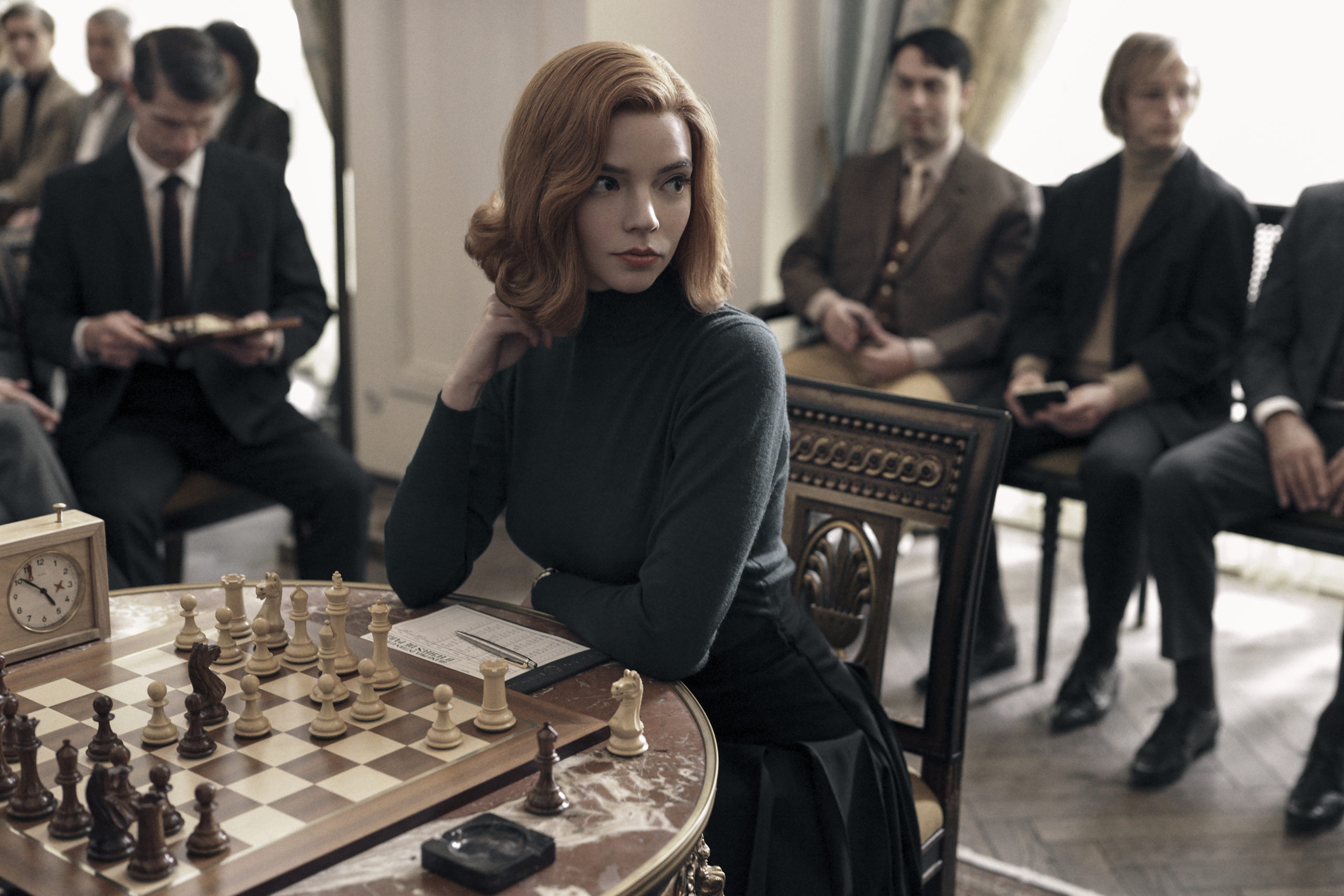Table of Contents Show
The Netflix limited series The Queen’s Gambit was released earlier this year to critical acclaim. The show, set in the 1950s and 60s, follows young orphan and chess prodigy Beth Harmon. Taught the game by the janitor at her orphanage, Mr. Shaibel, Beth quickly demonstrates an aptitude for chess. After she leaves the orphanage, Beth goes on to play competitively, pursuing the championship with a single-minded focus, consumed by a love for the game and a desire to be the best.

In this way, The Queen’s Gambit is following a pretty popular formula, one often seen in sports movies and TV shows. The formula follows a young, gifted prodigy, usually as they learn their craft and then begin to participate in it competitively. As the story progresses, they often stun others with their skill and face off against more established teams or players. It’s a genre that plays on the thrill of watching someone at the peak of their game work to be the best at what they do and does so through the lens of fierce competition with others.
The Queen’s Gambit And Competitive Chess
Though chess requires a different sort of skill set than most physical sports, the nature of it imbues it with its own sort of appeal. Not necessarily a better one, but unique in that it “has very few requirements beyond brainpower. There’s a hopefulness in that.” (( Watercutter, Angela. “Why The Queen’s Gambit Is the No. 1 Netflix Show Right Now.” Wired, 28 Oct. 2020. )) As such, it’s no wonder that the show has drawn the attention that it has — it’s an enthralling spin on an already-appealing formula. But this isn’t the only thing that makes the show great.
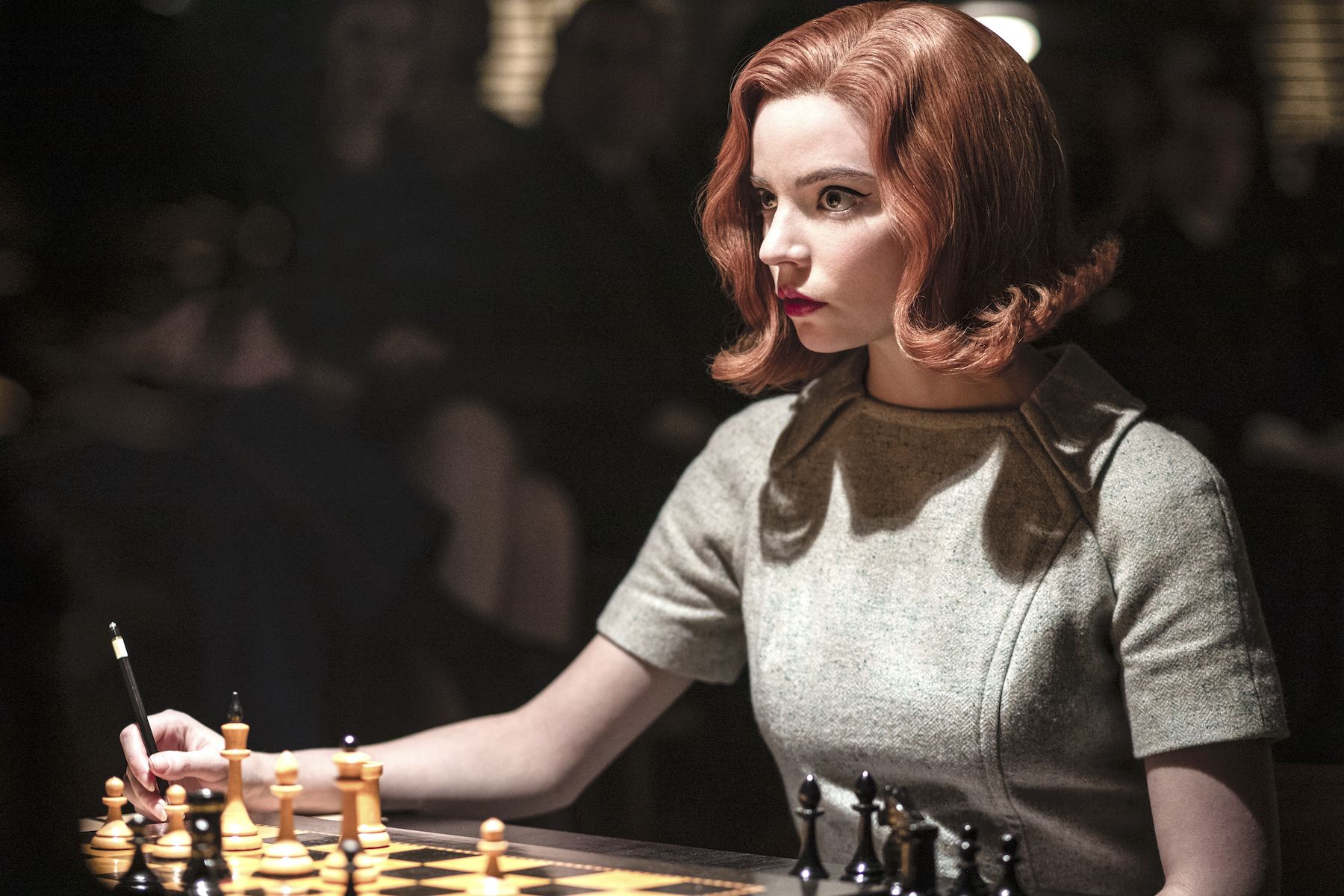
The Queen’s Gambit is a show about competition. Yet it isn’t just about sports, or about chess, or even about being the best that you can be. Its narrative about competition is done in conjunction with something more basic and human. Though The Queen’s Gambit is centered around chess, and there’s no doubting that chess is a major part of the appeal, at the end of the day, it is also, on some fundamental level, about trauma and human connection. It’s about what we need not just to win or succeed, but to flourish.
Trauma And Other Human Struggles In The Queen’s Gambit
It is important to note that the use of chess in the TV show — the narrative of Beth’s advancement through the world of professional, competitive chess, and her rise to the top — is interwoven with a secondary storyline. Beth’s pursuit of victory in The Queen’s Gambit is underscored by her personal struggles. Throughout the show, Beth deals with no small number of demons — particularly addiction and personal loss — and these are as key to her journey as any move she makes on the chessboard.
Drug Abuse And Addiction
Throughout The Queen’s Gambit, one of Beth’s greatest struggles is with addiction. After the death of her mother, Beth lives at an orphanage by the name of Methuen. It is there that she is first introduced to chess by Mr. Shaibel. Unfortunately, she is also put on a steady regimen of tranquilizer drugs by the orphanage’s administration. She quickly becomes dangerously addicted to these pills, frequently resorting to sneaking and stealing them — first from the orphanage and later from her adoptive mother.
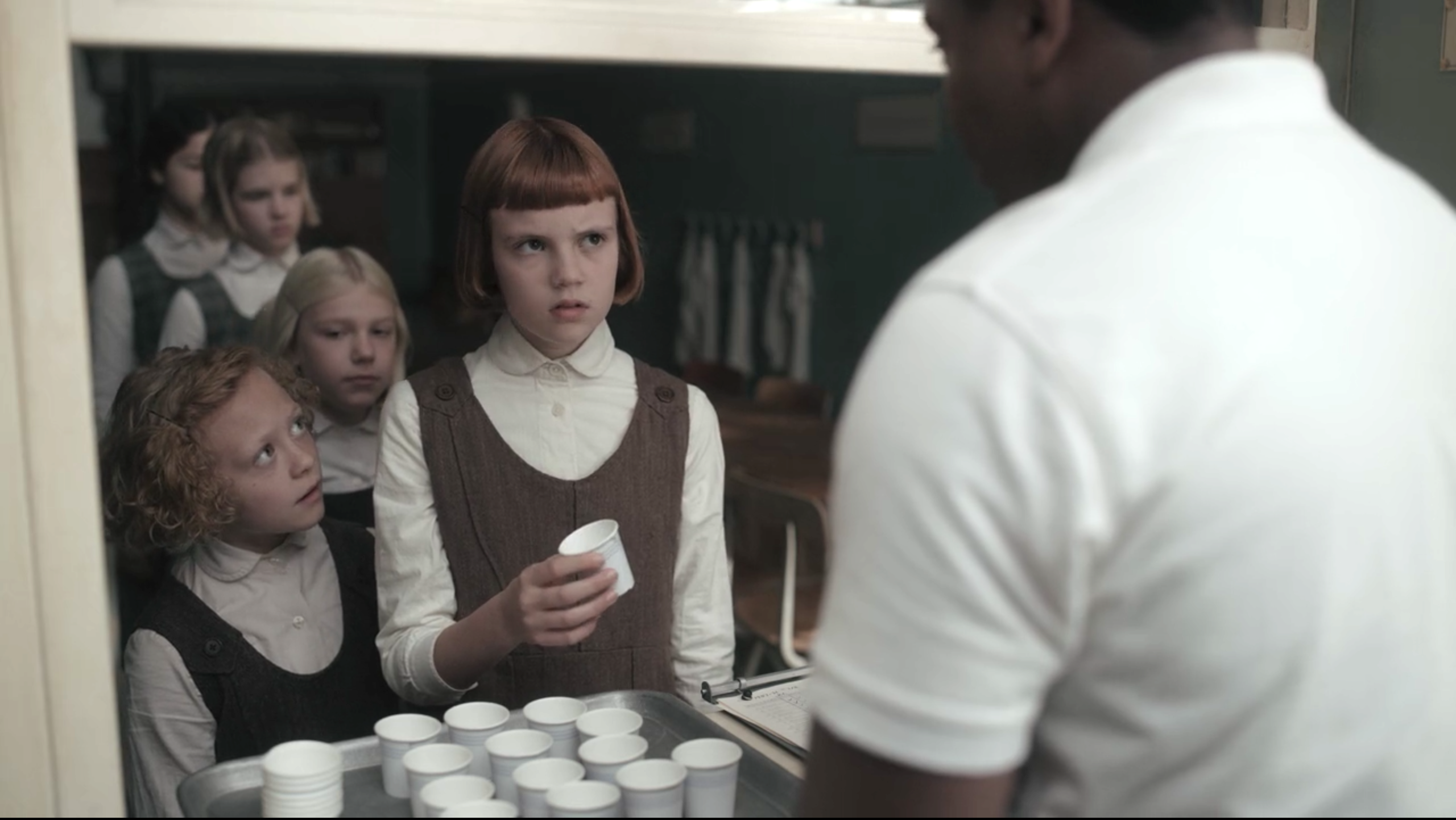
As the show proceeds, Beth branches out into other substances as well. She develops an affinity for marijuana and alcohol and becomes a heavy drinker. She uses these substances to excess. In the lulls between her chess matches, we are often confronted with scenes emphasizing her struggles with addiction as she goes on long binges of drugs, alcohol, or some combination of both. Her substance abuse in the show verges on being difficult to watch. It’s clear that she thinks that her drug and alcohol dependency helps her cope at the moment. Still, it is ultimately disastrous for her mental and physical health, including when it, at one point, leads her to pass out and knock her head against a table while in an intoxicated stupor.
Beth frequently uses her drugs to help her visualize her games. She believes that she needs them to win. Yet, as the show proceeds, it becomes clear this is blatantly untrue. Though Beth Harmon is quite prodigious at chess and uses drugs heavily, we see her successfully play many games sober. Later, after her fellow chess player, rival, and friend Benny Watts takes notice of her unhealthy drinking habits, she even goes sober for a time — and she continues to play well. The depiction of Beth’s substance abuse is imperfect, but one thing that The Queen’s Gambit does well is establishing how tumultuous the experience is. Often, Beth can maintain the guise of functionality, but that doesn’t mean that it isn’t a problem. And even when she starts to get better, little temptations slip through.
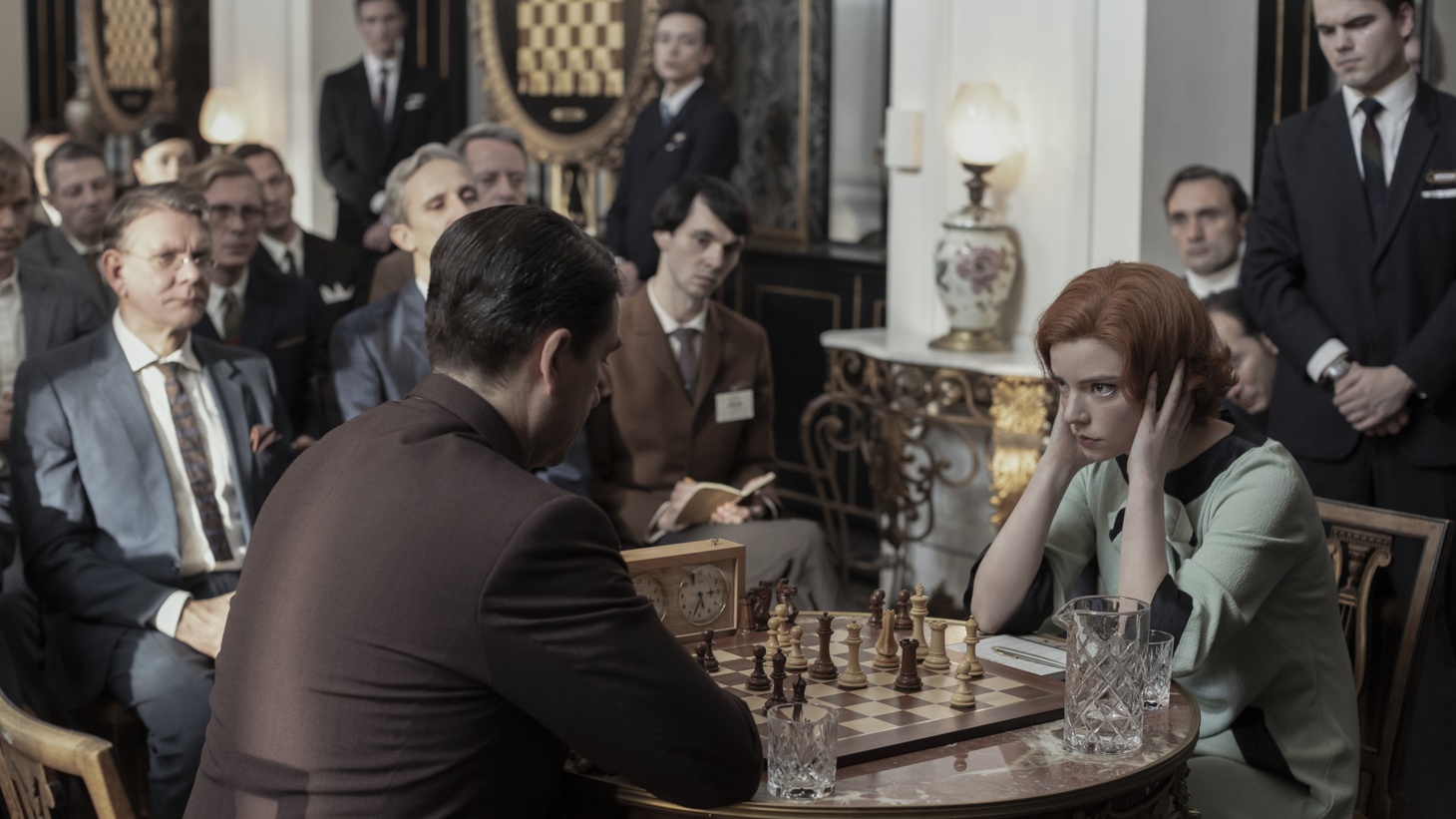
Just ahead of her second big match-up with the world champion, Russian chess player Vasily Borgov (she lost the first), Beth relapses. The next morning, when they play, Beth is shaky, thirsty, and seems to feel physically unwell due to her hangover. Despite her best efforts to keep collected, Borgov hands her a definitive second defeat. This turns Beth’s relapse into a full-blown spiral. She shuts out her friends, and she lashes out. She spends much of the rest of the episode drunk, high, or shopping for more alcohol.
Orphaned And Alone
Beth’s struggles with substance abuse also mirror her struggles in other aspects of her life. Beth’s life is very much affected by her love of chess and her addiction, but it is also shaped by loss — and not just the chess kind (though The Queen’s Gambit does indeed hand Beth her fair share of defeats in that respect as well). Beth’s first loss is the most obvious; Beth is orphaned after her mother commits suicide via car accident, which kicks off the events of the show. This loss haunts Beth throughout The Queen’s Gambit, and we are occasionally given flashbacks to Beth’s memories of her mother and her mother’s declining mental health.
Eventually, after some time at the orphanage, Beth is adopted by a married couple, the Wheatleys. Though Beth initially struggles to bond with her adoptive mother, especially after Mrs. Wheatley’s husband leaves her, Mrs. Wheatley eventually comes to encourage Beth’s talents. She helps her enroll and compete in tournaments. Mrs. Wheatley does not seem to know much about chess, but once she begins going to tournaments with her daughter, she seems to make an earnest effort to try and understand it.
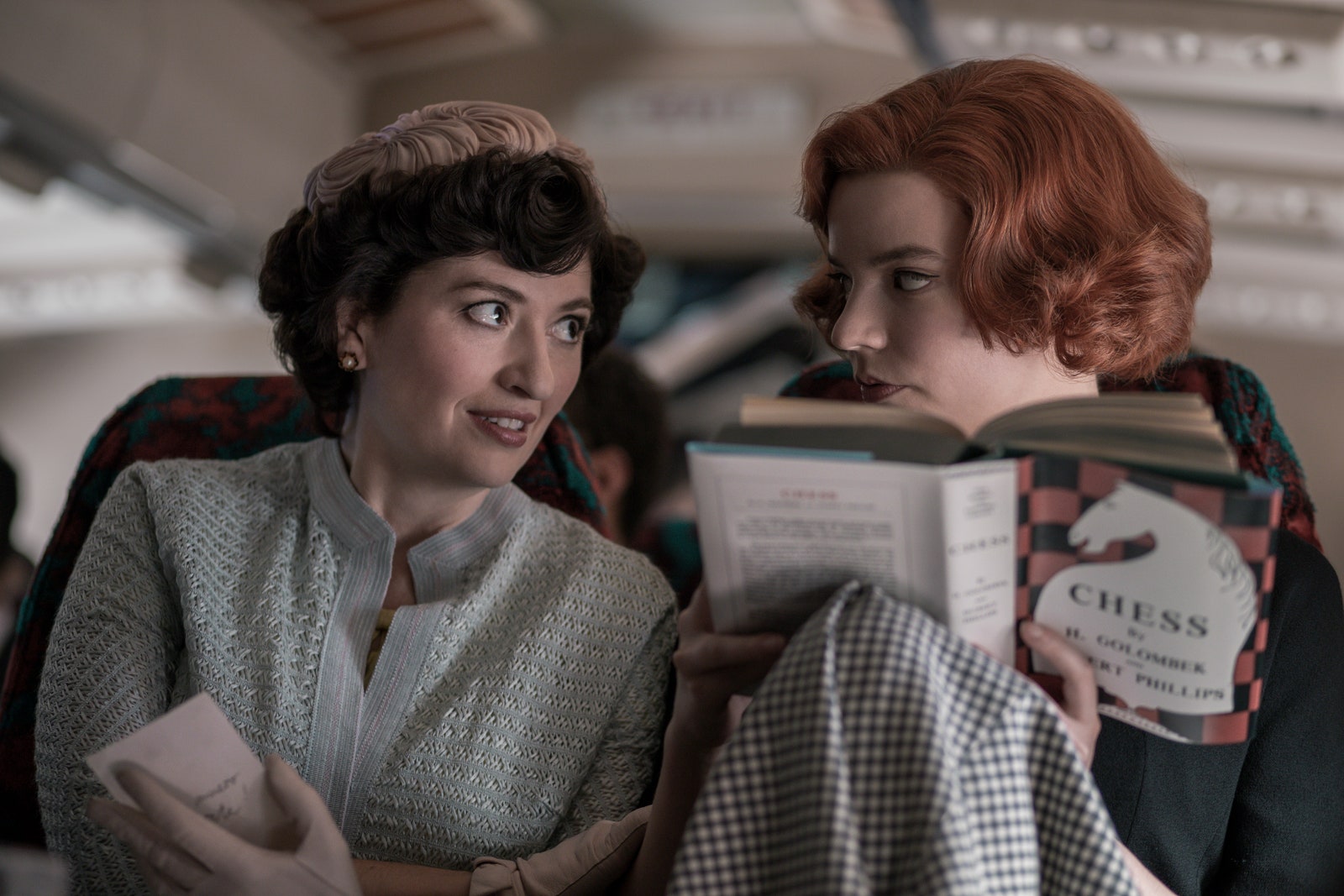
She is visibly proud of Beth’s victories, listens attentively as Beth recounts details from her matches, and is encouraging and supportive after Beth loses her first major match, despite the fact that Beth is fuming and lashing out. Beth and Mrs. Wheatley are unalike in disposition, temperament, and even the things they enjoy. Yet, in their lonesomeness and their support of each other, they form a legitimate mother-daughter bond that is founded in genuine affection. But, like Beth, Mrs. Wheatley seems to struggle with some form of addiction. She drinks heavily, racking up significant alcohol bills.
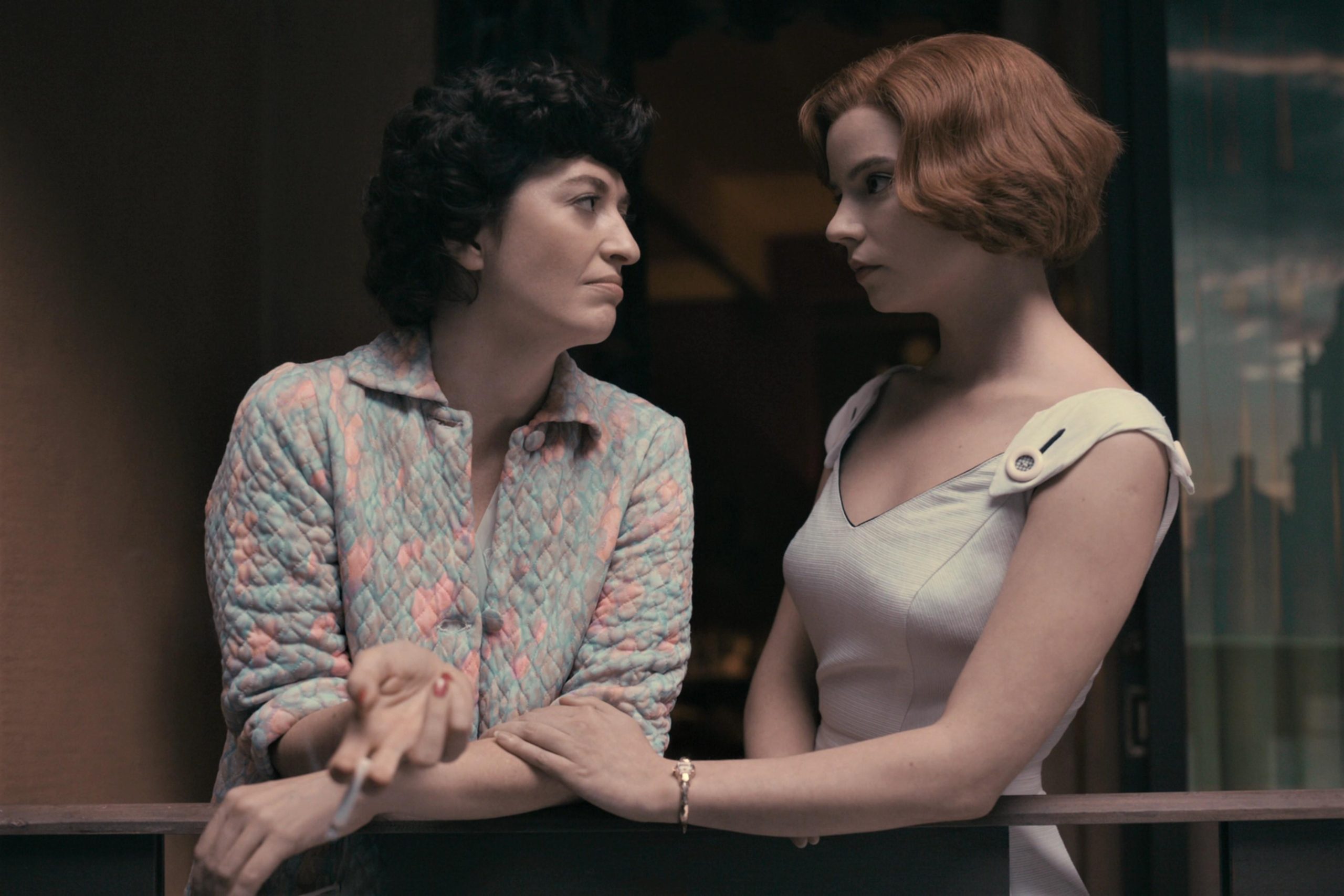
And this ultimately leads to Beth suffering her next loss. In the fourth episode, as Beth laments her first defeat to Borgov to her mother, who was absent from the match, Beth realizes that Mrs. Wheatley has died. The cause of death given to Beth is hepatitis, which The Queen’s Gambit implies to have been caused by alcohol. And despite Beth’s attempts to reach out, Mr. Wheatley refuses to return or help Beth resolve the situation, effectively leaving her to fend for herself.
The Significance Of Human Connection
In some ways, the loss of Mrs. Wheatley, Beth’s second mother, leaves Beth alone in the world. Beth does have some friendly acquaintances, but at this point, she has no one that she can truly turn to for support. Having lost not one but two maternal figures, it is clear how affected Beth is by Mrs. Wheatley’s death.
From then on, Beth constantly wears the watch on her wrist that was given to her by Mrs. Wheatley, an ever-present memento of one of the people who helped raise her. Beth’s loss of two maternal figures seems to play into a second, related dilemma throughout the show — her relationship with human connection, which she seems to desire and reject in equal measure.
Pushing People Away
Soon after Beth loses her mother, she bonds with Harry Beltik, the skilled player she defeated in her first-ever tournament and who is now helping her train. As they become close, Beth eventually invites him to live in her home, and they develop a relationship. For a while, all is well. But after a time, Beltik seems to realize that a relationship with Beth is seemingly doomed and that he does not share her single-minded focus on chess.
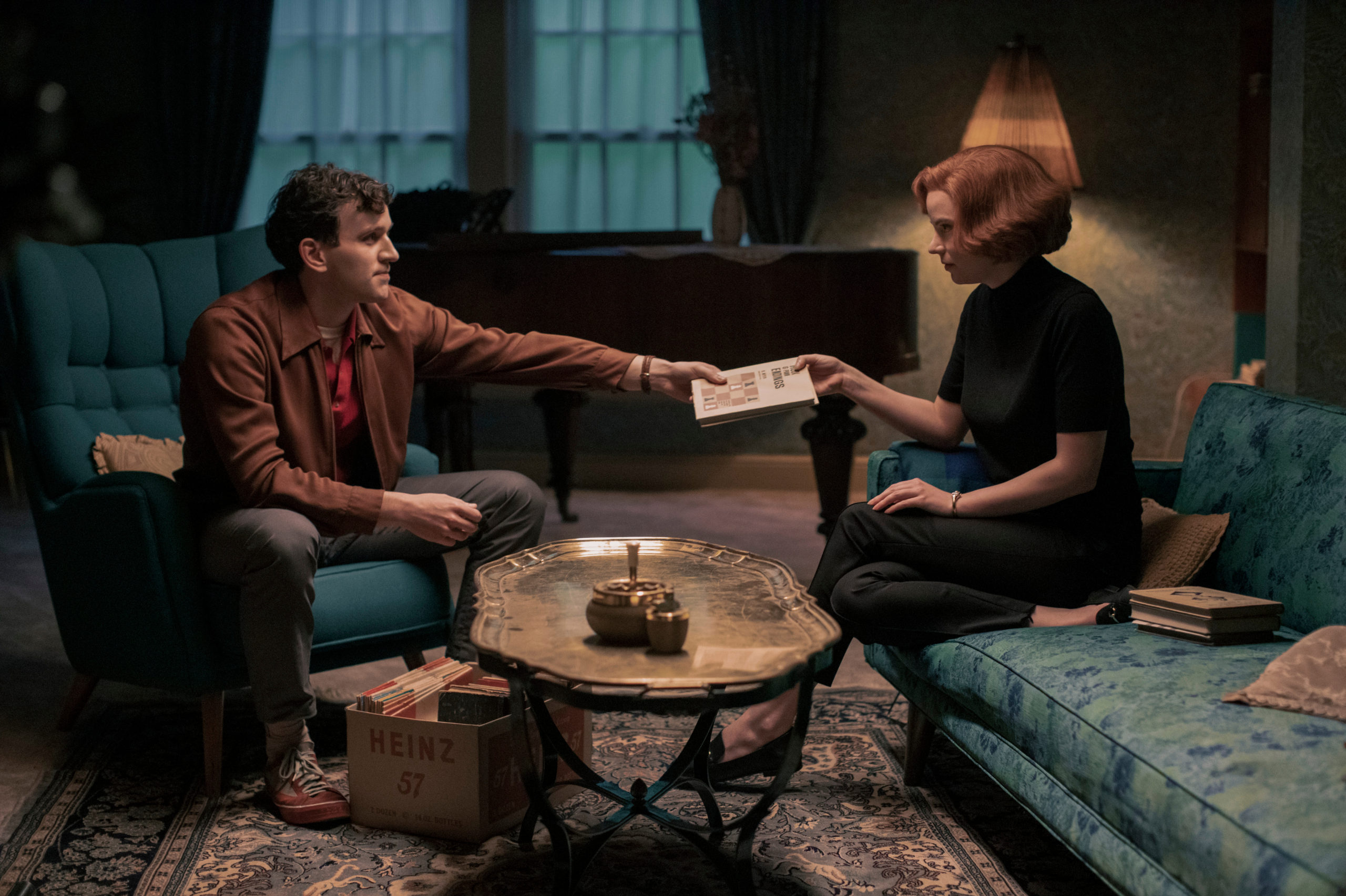
This seems to underscore a consistent theme for Beth. She longs for human connection, but also tends to either treat it as secondary to her passion for chess or, at times, even actively rejects it once the connection is formed. The latter is perhaps most clearly visible in Beth’s connection with Benny Watts and his friends, with whom she becomes close while she’s training with Watts in New York during her period of sobriety, which Watts encouraged.
She seems to form a strong bond with them and even becomes romantically entangled with Watts for a period. But after she relapses and loses to Borgov for the second time, Beth ignores Watts’ pleas to return to New York where he can support her — he hopes to keep her sober or at least be there to help her if he can’t stop her from getting intoxicated. Instead, though, Beth returns home to Kentucky, where she goes on a binge of alcohol and drugs.
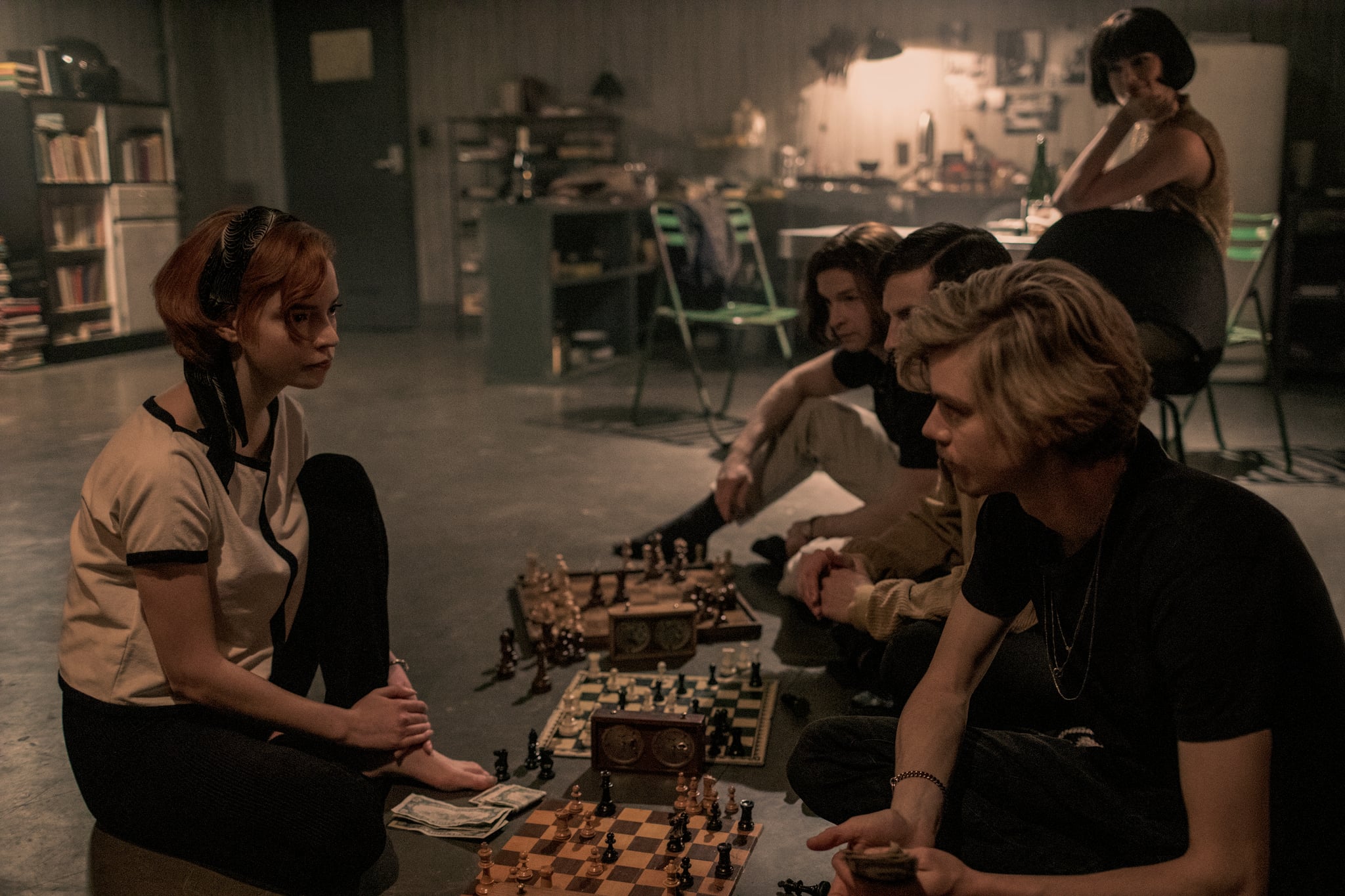
During this time, it seems that no one can get through to Beth. She has fastidiously ignored Watts’ attempts to help her and is effectively isolating herself at home. Eventually, Harry Beltik also comes by, having returned to express his concern for her. The first time he sees her, Beth cannot answer the door, as she is unconscious after passing out in an intoxicated stupor. Yet, their second encounter clarifies that her opening the door may not have made much of a difference because when Beltik reaches out to her a second time and does speak to her, Beth lashes out. Unable to get through to her, Beltik leaves.
Letting People In
Beth does not pull out of her spiral until she is abruptly reunited with Jolene — a friend of hers from the orphanage, with whom she attends the funeral of her teacher, Mr. Shaibel, who has passed away. Though Beth is dry-eyed during the proceedings, afterward, she wanders the halls of the orphanage, returning to where Mr. Shaibel taught her to play. There, she discovers a wall of newspaper clippings of her victories, which Mr. Shaibel had been collecting. He had followed her journey the entire time. Returning to Jolene in the car with a picture of her and Mr. Shaibel in hand, Beth breaks down and allows Jolene to comfort her through her grief.
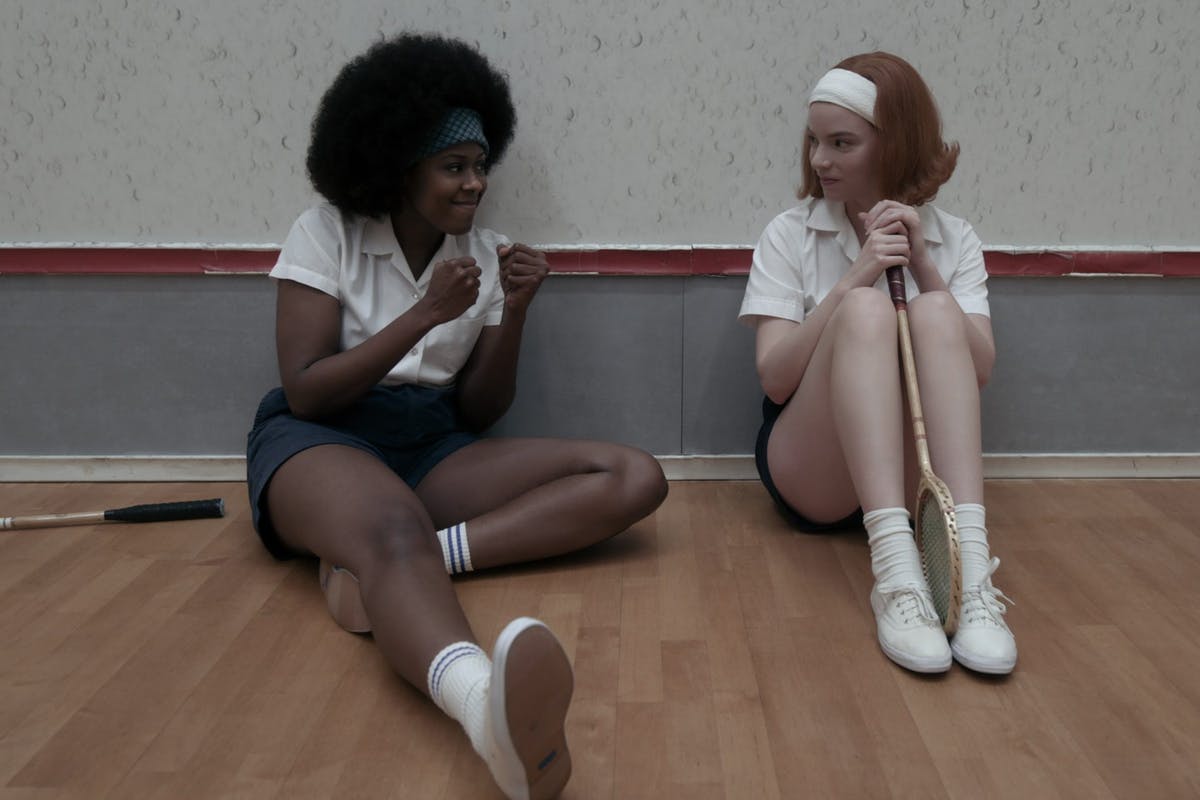
Soon after Mr. Shaibel’s funeral, Beth makes her way to Russia with Jolene’s assistance for the final episode’s climactic match-up — her last game against Vasily Borgov. There, she reunites and reconciles with another figure from her past — fellow chess player Townes — who was her first crush and another individual whose friendship she’d rejected in an earlier episode.
Beth plays her way through the tournament, defeating her opponents with relative ease. In the end, it comes down to her and Borgov. It is their third match-up, and Beth lost the first two. It is pretty clear to the viewer where the trajectory of the episode is headed (which is a good thing) — if only due to the fact that the formula of The Queen’s Gambit carries some genre expectations. But most importantly, Beth has hit rock bottom already. There is only one place left for her to go, and that’s up.
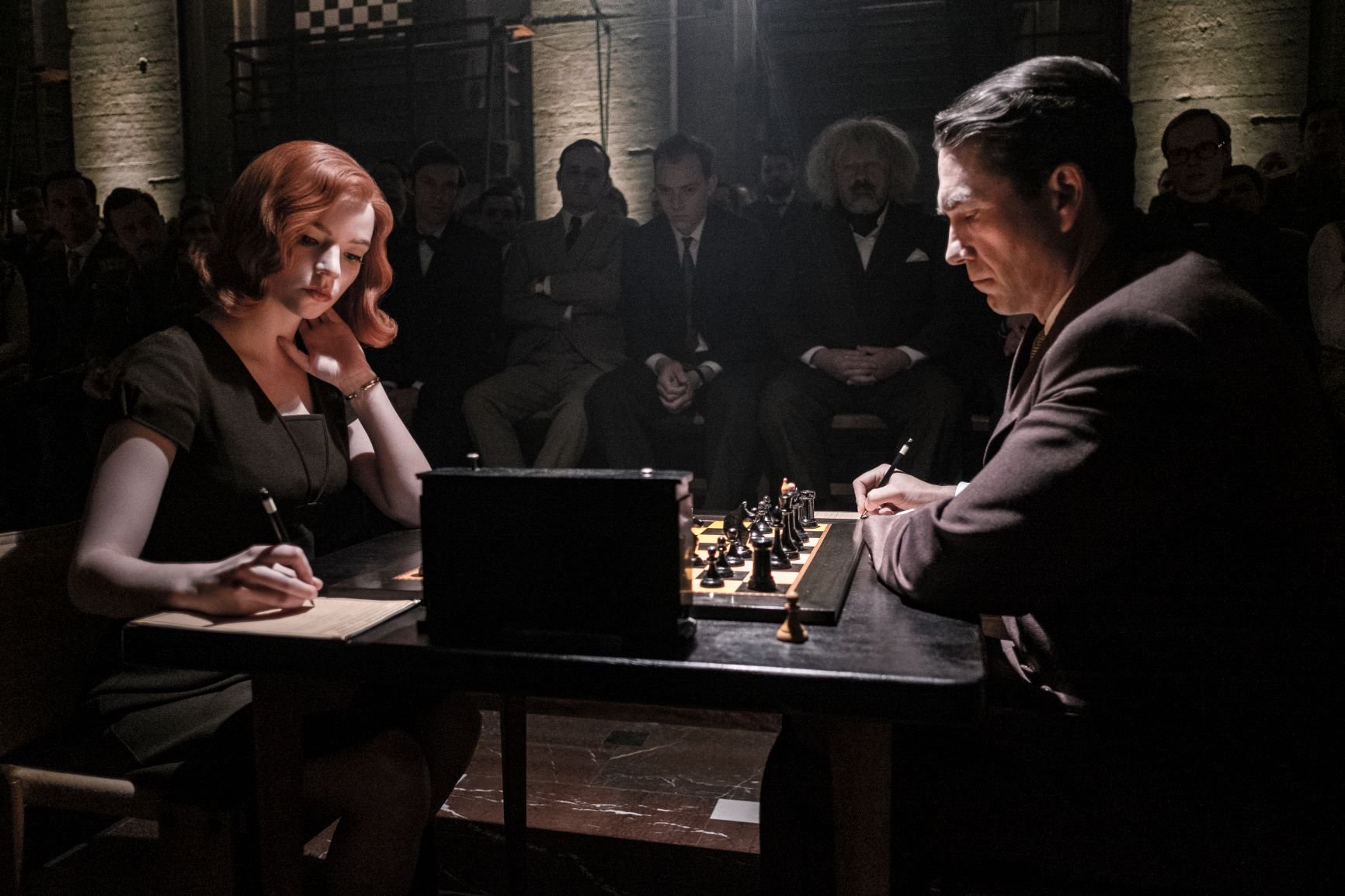
The first day of play between Beth and Borgov in Russia is already a drastic improvement from Beth’s disastrous second game with him. It ends in adjournment, with neither arising victorious and the game set to continue where they left off the next day. As Beth awaits the resumption of the match, she gets a phone call from her friends back in the States, including Watts and Beltik. Together, they gather around the phone and work with Beth to dissect Borgov’s strategy and all of Beth’s potential options. Beth has spent much of The Queen’s Gambit holding people at arm’s length — intentionally or accidentally — with her fixation on winning, but here it becomes clear that that was never the key.
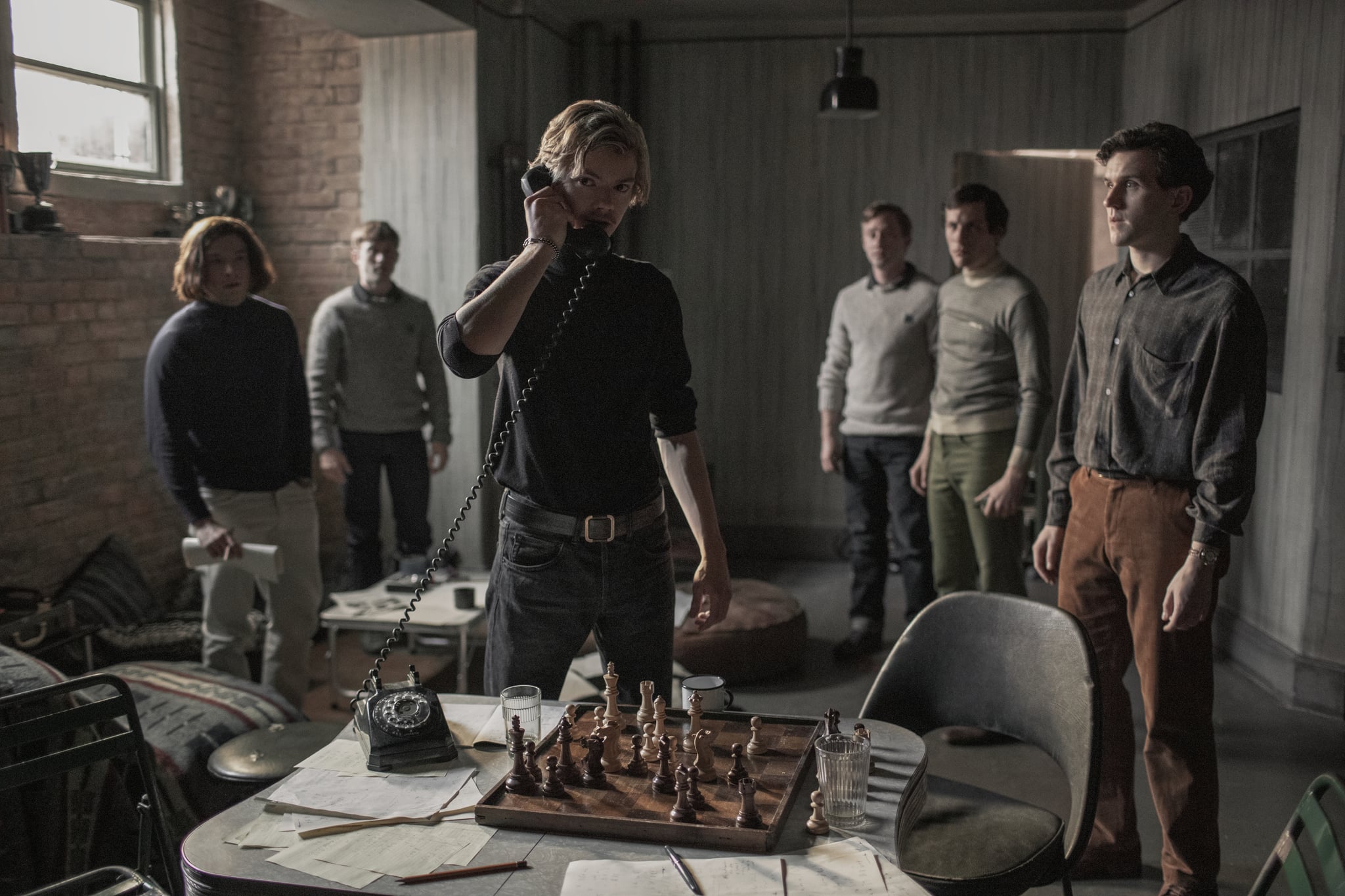
This is the match against Borgov that she wins — the match after reuniting with Jolene, after realizing that Mr. Shaibel had cared for her for all this time, after reconciling with Townes, after her friends unite to help her through it all, and, most importantly, she accepts. That’s how she wins — how she gets what she’s been working towards all this time.
Two Shades Of Victory
In this sense, Beth wins the day in more ways than one. She achieves victory in the match that she’s been preparing her whole career for — the match that The Queen’s Gambit has been building up to this whole time. But she also triumphs against her inner demons. It’s a personal, emotional victory as well as a professional and public one. To take a brief aside — there is a very fair critique to be made that the resolution of Beth’s arc, especially in regards to her addiction, comes too easily. As Lilly Dancyger, writing for Harper’s Bazaar, notes, the show more or less resolves its addiction arc through a brief conversation with Beth and Townes, and then during her final match, having her “do her visualization trick while sober for the first time. Problem solved, addiction beat, just like that. But that’s hardly how it works in real life.” (( Dancyger, Lilly. “The Queen’s Gambit and the Dangerous Myth of Drug-Induced Genius.” Harper’s Bazaar, 16 Nov. 2020. )) The show is clear about how drastically low Beth’s lows are, and it does ultimately clarify that Beth’s genius is not a result of the drugs. But whether the show does this well enough is difficult to discern.
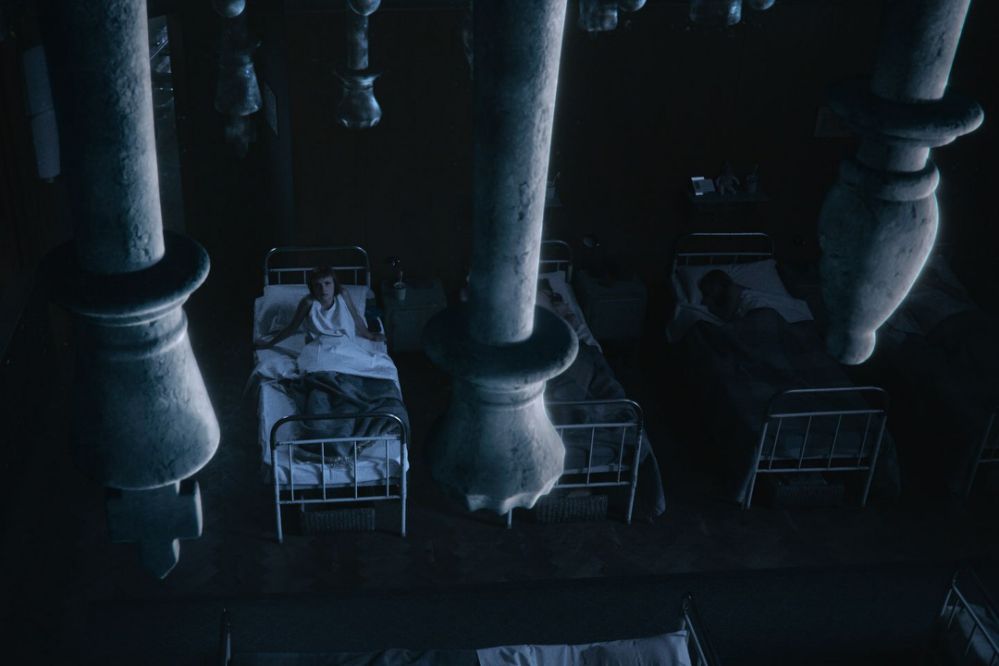
Still, despite the show’s flaws and slightly rushed execution, there is something of a simple beauty to how intertwined Beth’s final victory is to her emotional health and relationships with others. The trope of the distant, cold genius isn’t uncommon, especially among characters that the narrative wants to frame as uniquely gifted. The notion that Beth’s focus on victory even at the expense of all else — of connection with others and joy and beauty — was part of what was holding her back is refreshing in its own sort of way.
The idea here is not, to be clear, that Beth was not strong enough on her own. It’s that she’s made stronger as a whole by finding personal fulfillment not just in chess but in the other aspects of her life as well. And at the show’s end, as Beth is being told about the plans for her after her match — including visiting the White House and a photo-op with the president — Beth instead gets out of the car, despite the warnings that she might miss her flight, in order to walk. When she encounters a large group of elderly men playing chess, Beth is quickly recognized and is invited to play one of them.
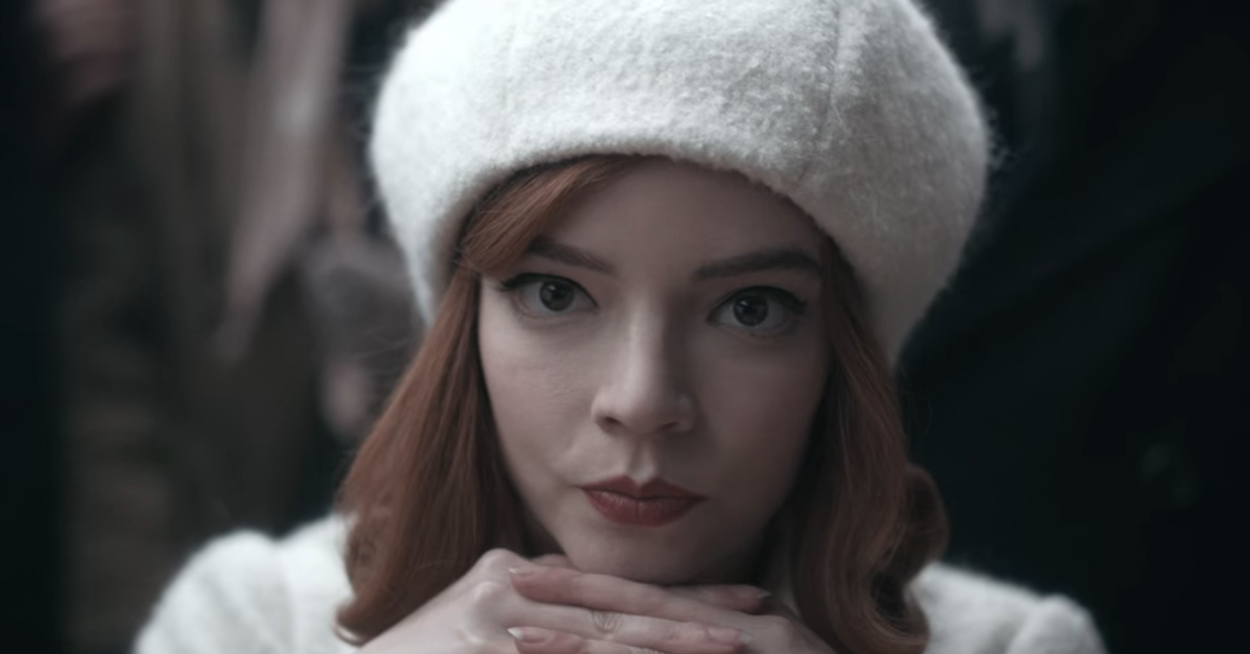
Beth, now the world champion, agrees. She sits down to play him, and in many ways, it is a mirror to the first episode, when she sat down across the table from a different older man, Mr. Shaibel, and played for no other reason than it interested her, and she wanted to. At the very end of this tale, Beth plays — not to win (she can), not to prove that she’s the best, not for money or fame. There are no stakes whatsoever. It’s just for the joy of it.
